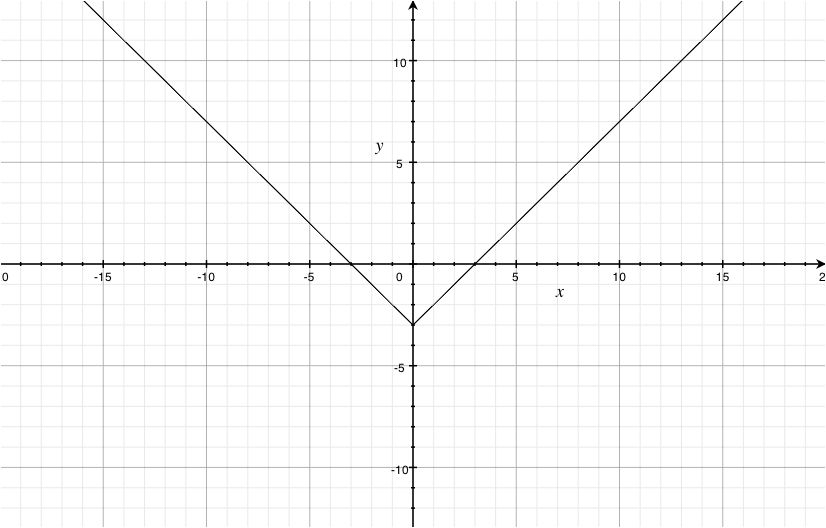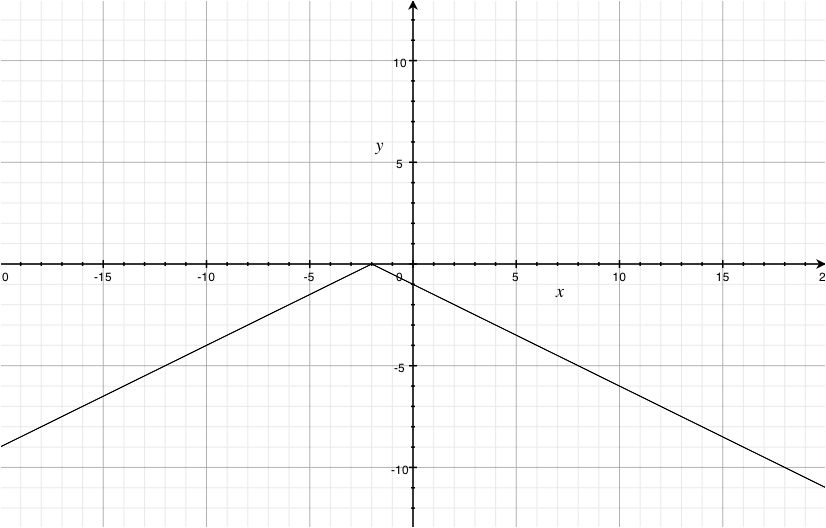Connecting...

This is a quick preview of the lesson. For full access, please Log In or Sign up.
For more information, please see full course syllabus of Algebra 1
For more information, please see full course syllabus of Algebra 1
Algebra 1 Solving Equations with Absolute Values
Lecture Description
In this lesson we'll see how to solve equations that have absolute values. First thing is to understand the definition of the absolute value. We can remove the absolute value, but we have to consider two possibilities when doing so. For example, if we had |x|=2, then x could be 2, but it could also be negative 2, since these two numbers have the same absolute value. There are some steps that you should follow when solving equations with absolute values. The first one is to isolate the absolute value. The second one is to split the problem into two problems. You'll see how to solve from here in the video.
Bookmark & Share
Embed
Share this knowledge with your friends!
Copy & Paste this embed code into your website’s HTML
Please ensure that your website editor is in text mode when you paste the code.(In Wordpress, the mode button is on the top right corner.)
×
Since this lesson is not free, only the preview will appear on your website.
- - Allow users to view the embedded video in full-size.
Next Lecture
Previous Lecture









































 Carleen Eaton
Carleen Eaton Grant Fraser
Grant Fraser Eric Smith
Eric Smith
 Answer Engine
Answer Engine





2 answers
Last reply by: Thomas Lyles
Tue Mar 3, 2020 7:38 AM
Post by Thomas Lyles on March 2, 2020
When we have two solutions because of an expression with absolute value, do we say that both are true, or that one or both is true?
I.E. would we use "AND" or "OR" when reporting the solutions?
Or does it depend on the application?
If we don't have an application, do we say that both are true?
thanks
1 answer
Sun Dec 3, 2017 5:58 PM
Post by Andres Keichian on October 24, 2017
Agree with Denise, should be 5x-2 but then x=2 ?
2 answers
Last reply by: Denise Bermudez
Sun Mar 8, 2015 10:06 AM
Post by Denise Bermudez on March 7, 2015
hi
I dont understand why in example II when you break the absolute values into two separate ones (the second one)you get 5x + 2? Shouldnt you get a 5x-2 when you multiply it by a (-1)?
because in example III when you did (x+2)=-1 and multiplied it you got
-x-2=-1
1 answer
Mon Dec 2, 2013 8:42 PM
Post by Jason Arias on November 26, 2013
Does absolute value "||" and parenthesis "()" have the same priority under the order of operations? Watching the order in which you solve the solutions implies this, but i just want to confirm.
Apart from "||" changing whatever is inside into a positive, seems to behave like "()"